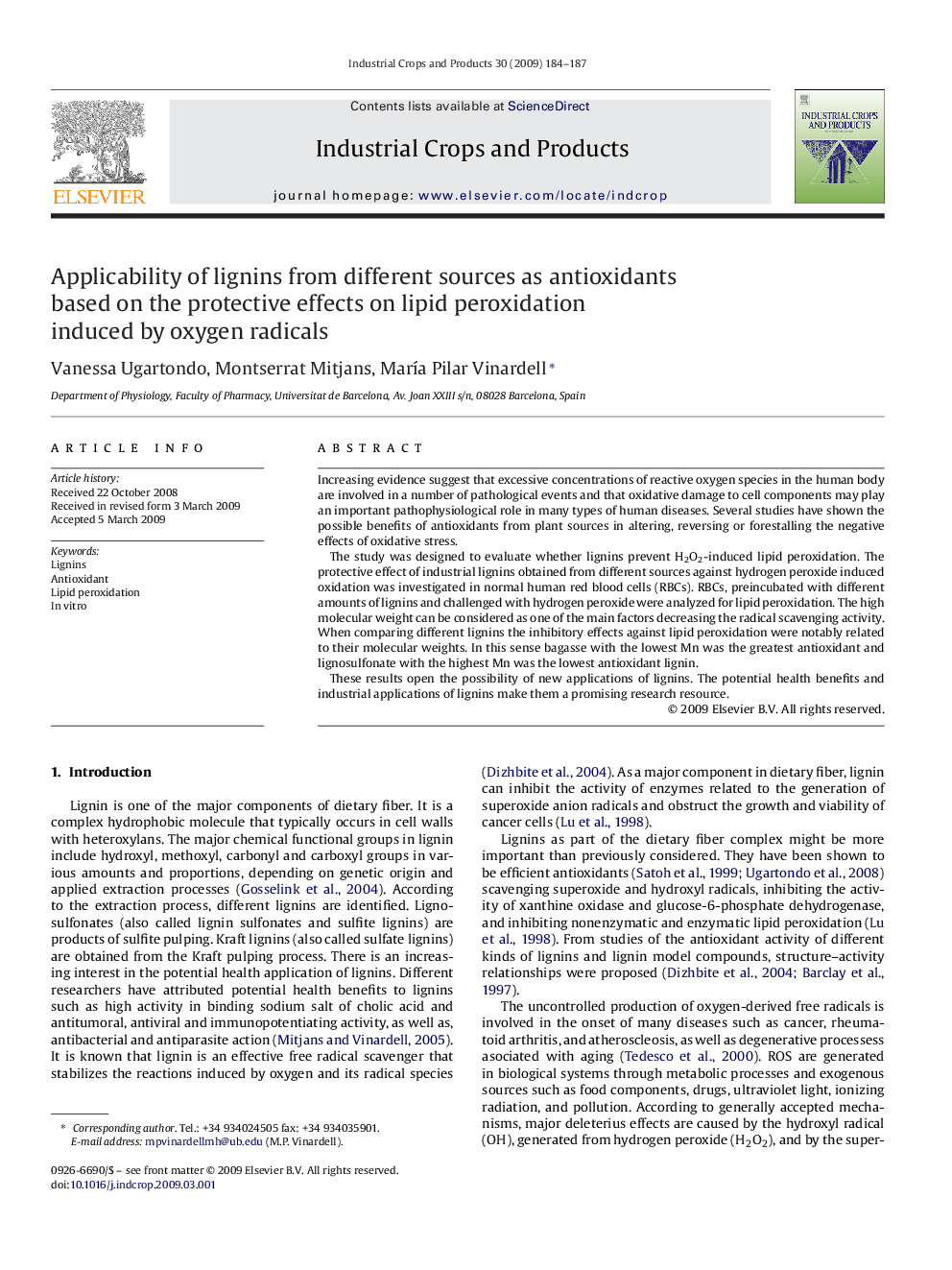| Article ID | Journal | Published Year | Pages | File Type |
|---|---|---|---|---|
| 4515014 | Industrial Crops and Products | 2009 | 4 Pages |
Increasing evidence suggest that excessive concentrations of reactive oxygen species in the human body are involved in a number of pathological events and that oxidative damage to cell components may play an important pathophysiological role in many types of human diseases. Several studies have shown the possible benefits of antioxidants from plant sources in altering, reversing or forestalling the negative effects of oxidative stress.The study was designed to evaluate whether lignins prevent H2O2-induced lipid peroxidation. The protective effect of industrial lignins obtained from different sources against hydrogen peroxide induced oxidation was investigated in normal human red blood cells (RBCs). RBCs, preincubated with different amounts of lignins and challenged with hydrogen peroxide were analyzed for lipid peroxidation. The high molecular weight can be considered as one of the main factors decreasing the radical scavenging activity. When comparing different lignins the inhibitory effects against lipid peroxidation were notably related to their molecular weights. In this sense bagasse with the lowest Mn was the greatest antioxidant and lignosulfonate with the highest Mn was the lowest antioxidant lignin.These results open the possibility of new applications of lignins. The potential health benefits and industrial applications of lignins make them a promising research resource.
